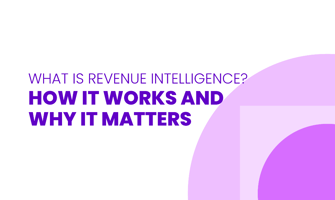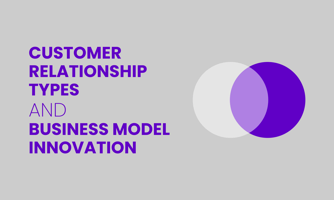In B2B SaaS, growth isn't solely about acquiring new customers. It's also about maximizing the...
This Single Metric Should Be Your RevOps North Star
A RevOps strategy focused on Customer Lifetime Value (CLV) is essential for long-term growth. Often, companies treat RevOps as a function that focuses heavily on sales. However, to truly drive sustainable growth, RevOps should integrate marketing, sales, and customer success teams, aligning them around CLV, the most important metric for growth and retention.
Toni Keskinen, co-founder of 180ops, explains:
“Most companies still treat customer success, marketing, and sales as separate silos, each with its own goals. No one truly owns lifetime value. To build a sustainable business, every team should be aligned around increasing CLV. It’s about focusing on the long-term value of the customer, not just optimizing for short-term results.”
CLV: A KEY DRIVER OF SUSTAINABLE GROWTH
While there are certainly other important metrics, CLV stands out as a critical driver of sustainable growth.
As Toni states:
“RevOps shouldn’t ignore other metrics, but CLV is the one that drives long-term growth. It ensures that every department contributes to creating lasting relationships with customers. It’s about focusing on the bigger picture, not just short-term sales numbers.”
According to PwC, CLV is a critical metric reflecting the historical and future profitability of customers. By understanding and optimizing CLV, companies can formulate customer-specific strategies aimed at maximizing each customer's lifetime profits and increasing the duration of customer relationships
Further, a recent study found that organizations leveraging CLV insights in their strategic marketing practices observed improvements in financial performance metrics, notably market valuation indicators like the price-to-earnings (P/E) ratio.
By aligning RevOps around CLV, companies can ensure that every team—from sales to customer success—works toward the same goal: building strong, lasting customer relationships.
FORGET QUICK WINS IN FAVOR OF LONG-TERM VALUE
Focusing on CLV shifts the perspective from short-term goals to long-term value. Instead of optimizing for immediate sales or handoffs, RevOps should be designed to enhance the customer experience at every stage, ensuring that customers remain engaged and loyal.
Key aspects of a CLV-centered RevOps model include:
- Centralized Data: RevOps needs a single source of truth for customer data, accessible to all teams. When marketing, sales, and customer success are working from the same data set, they can collaborate more effectively to increase CLV and improve customer relationships. According to Gartner, setting up a centralized source of data and insights is essential to a comprehensive RevOps strategy.
- Collaboration Across Teams: For RevOps to be effective, sales, marketing, and customer success teams must be aligned around the goal of increasing CLV. This requires breaking down silos and working together to ensure that every customer interaction contributes to long-term value, not just a quick transaction. McKinsey & Company reports that organizations with strong cross-functional collaboration have a 25% higher chance of achieving superior business performance.
- Customer-Centric Approach: CLV encourages companies to adopt a customer-centric mindset. By understanding customer needs at every stage of their journey, RevOps can focus on delivering value that keeps customers engaged for the long term. According to Forbes, companies that put the customer at the center of their operations see up to a 60% increase in profitability, as they retain and nurture their existing relationships rather than just focusing on acquisition.
READ MORE: Customer Lifetime Value Prediction: Significance and Applications
MAKE CLV YOUR ORGANIZATION’S UNIFYING FORCE
CLV is how to build sustainable growth. By prioritizing CLV, organizations can create a unified approach to managing the customer journey, from acquisition through retention, ensuring that each team works together to increase customer value over time.
A RevOps model that centers around CLV allows companies to nurture existing relationships rather than merely focusing on new customer acquisition. This shift toward long-term customer value helps create a more efficient and sustainable business model.
CLV isn’t the only metric that matters, but it is the one that drives consistent, long-term success. A RevOps model built around CLV ensures that your organization isn’t just about closing deals, but about nurturing lasting customer relationships that fuel sustained growth.



.png?height=200&name=CUSTOMER%20SEGMENTATION%20SOFTWARE_%20FEATURES%20AND%20COMPARISONS%20(7).png)



